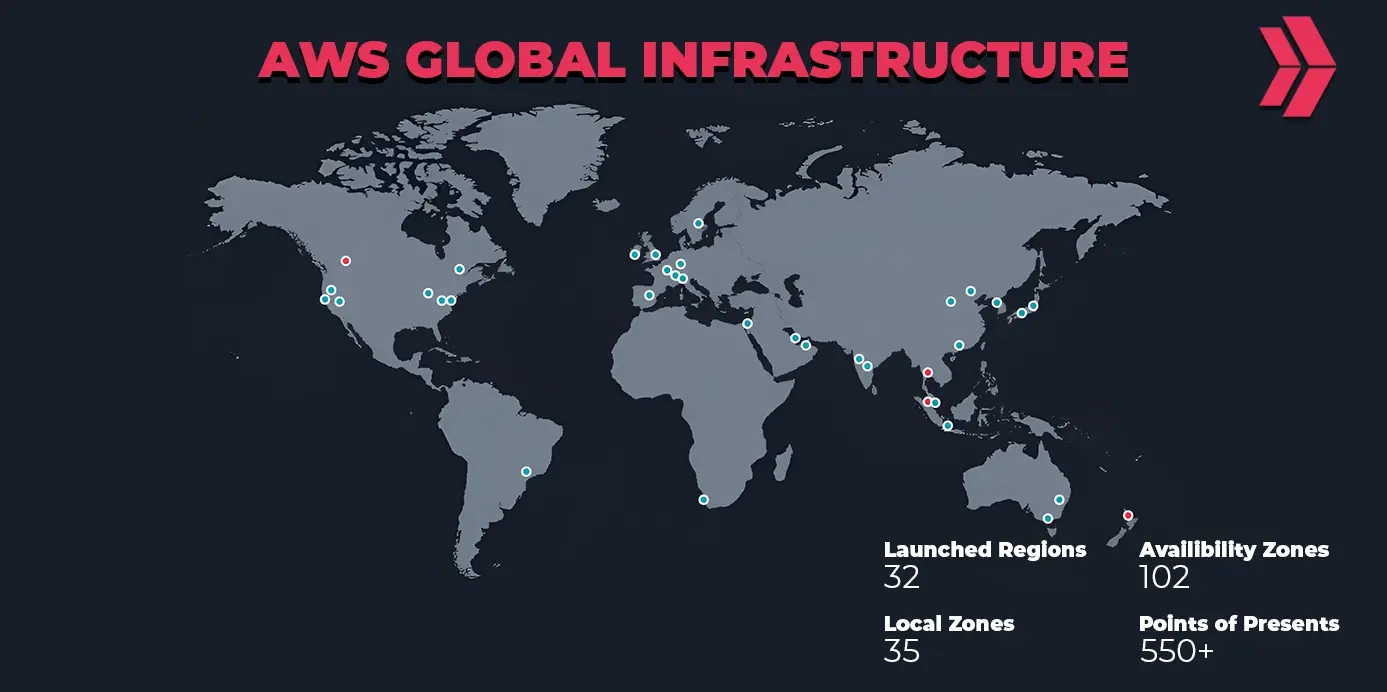Understanding AWS Global Infrastructure
 Mohmmad Saif
Mohmmad Saif
KoAWS Global Infrastructure
AWS (Amazon Web Services) global infrastructure is built for high availability, scalability, and security, offering a wide range of cloud computing services. Here are the main components:
Regions:
Definition: Geographic areas made up of multiple data centers.
Function: Each region is isolated and independent, ensuring fault tolerance and stability. Regions let customers deploy applications closer to end users, reducing latency and improving performance.
Example: US East (N. Virginia), EU (Ireland), Asia Pacific (Sydney).
Availability Zones (AZs):
Definition: Separate data centers within a region, each with its own power, cooling, and networking.
Function: AZs are connected through low-latency links. This separation ensures high availability and fault tolerance, as a failure in one AZ does not impact others.
Example: A region like US East (N. Virginia) has multiple AZs, such as us-east-1a, us-east-1b, etc.
Edge Locations:
Definition: Sites that deliver content to end-users with lower latency.
Function: Used by services like Amazon CloudFront to cache content closer to users, reducing latency and improving performance.
Example: Edge locations are spread globally, including cities like New York, London, Tokyo, and Sydney.
- Local Zones:
Definition: Extensions of AWS regions that place compute, storage, database, and other select services closer to large populations.
Function: Provides single-digit millisecond latency to end-users.
Example: Local Zones are present in locations such as Los Angeles, CA.
- Wavelength Zones:
Definition: AWS infrastructure embedded within telecom providers' data centers at the edge of the 5G network.
Function: Enables developers to build applications that require ultra-low latency to mobile and connected devices.
Example: Deployed in collaboration with telecom providers in cities such as Boston and San Francisco.
- Outposts:
Definition: Fully managed service that extends AWS infrastructure, services, APIs, and tools to virtually any on-premises facility.
Function: Provides a consistent hybrid experience by bringing AWS services on-premises.
Example: Used in scenarios where low-latency access to on-premises systems is required.
This infrastructure supports various services and allows the deployment of applications and data across multiple regions and Availability Zones (AZs) for improved reliability and performance.
Subscribe to my newsletter
Read articles from Mohmmad Saif directly inside your inbox. Subscribe to the newsletter, and don't miss out.
Written by

Mohmmad Saif
Mohmmad Saif
👋Hello I am Mohd Saif, passionate technology enthusiast currently pursuing a bachelor of Computer application degree. 🎓Education: I am currently pursuing a bachelor of Computer application degree with the focus on coding at Bareilly University my education journey has equipped me with strong foundation in Computer science and I am eager to apply my knowledge to real word challenges. 💡Passion for technology: I have always been deeply passionate about technology and I am particular drawn to devops with AWS. 🚀Skills: 🔹Linux 🔹Shell scripting 🔹Python 🔹Ansible 🔹Docker 🔹Kubernetes 🔹Jenkins CI/CD 🔹Maven 🔹Git and GitHub ✨Future goals: My goal is to facilitate seamless collaboration between development and operations teams, ensuring faster releases and high-quality software. I am a proactive learner, constantly exploring new DevOps trends and practices